Josh Johansen
@jojolab.bsky.social
Japan based neuroscientist, Team Director at RIKEN Center for Brain Science, studying the neural basis of emotional learning & memory, adventure cyclist
Pinned
Josh Johansen
@jojolab.bsky.social
· May 14
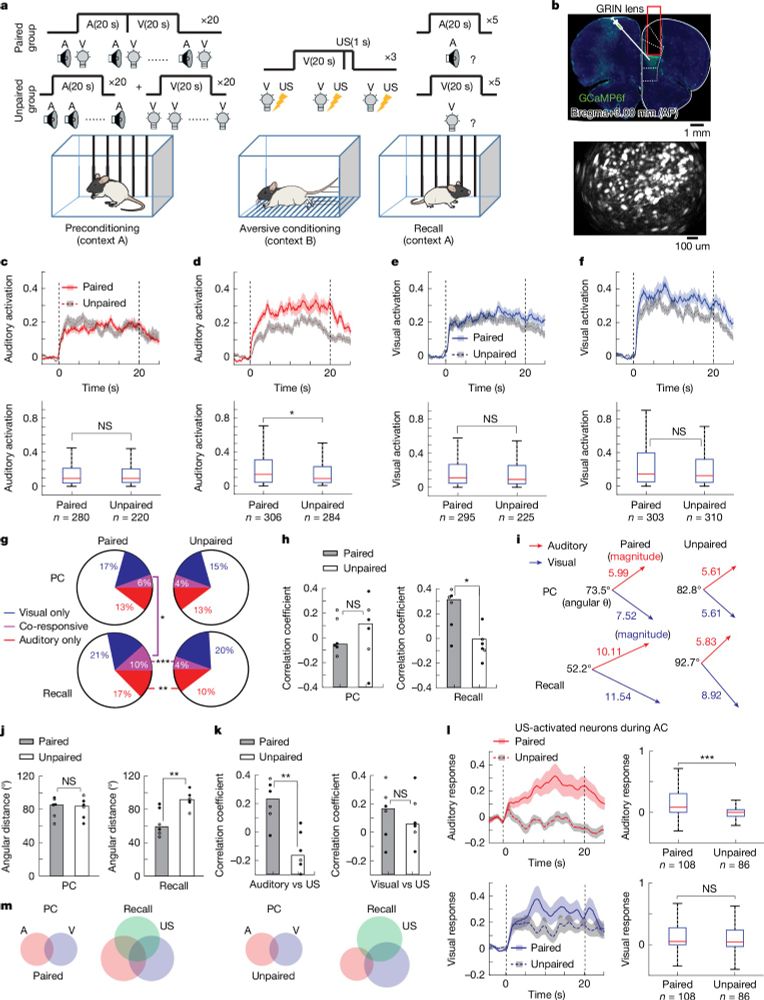
Prefrontal encoding of an internal model for emotional inference
Nature - Neurons in the rodent dorsomedial prefrontal cortex encode a flexible internal model of emotion by linking directly experienced and inferred associations with aversive experiences.
rdcu.be
I’m excited to share a new paper from the lab. The study led by Xiaowei Gu reveals how the mPFC encodes complex emotional memories, using an internal model to infer emotional associations and memories via projections to the amygdala. a🧵(1/8)
rdcu.be/el19t
rdcu.be/el19t
🧠🍺 Join us for the Japan Neuroscience Global Soirée-#SfN2025 Social!
📅 Tue, Nov 18 | 🕖 7–9 PM
📍 Protector Brewery: maps.app.goo.gl/Z4hmQnLSDjwZ...
San Diego craft beer, great food (free while supplies last) & lively discussions!
🔗 RSVP (optional): evite.me/pAvuVkpqbK
All welcome—spread the word! 🍻
📅 Tue, Nov 18 | 🕖 7–9 PM
📍 Protector Brewery: maps.app.goo.gl/Z4hmQnLSDjwZ...
San Diego craft beer, great food (free while supplies last) & lively discussions!
🔗 RSVP (optional): evite.me/pAvuVkpqbK
All welcome—spread the word! 🍻

November 5, 2025 at 12:30 AM
🧠🍺 Join us for the Japan Neuroscience Global Soirée-#SfN2025 Social!
📅 Tue, Nov 18 | 🕖 7–9 PM
📍 Protector Brewery: maps.app.goo.gl/Z4hmQnLSDjwZ...
San Diego craft beer, great food (free while supplies last) & lively discussions!
🔗 RSVP (optional): evite.me/pAvuVkpqbK
All welcome—spread the word! 🍻
📅 Tue, Nov 18 | 🕖 7–9 PM
📍 Protector Brewery: maps.app.goo.gl/Z4hmQnLSDjwZ...
San Diego craft beer, great food (free while supplies last) & lively discussions!
🔗 RSVP (optional): evite.me/pAvuVkpqbK
All welcome—spread the word! 🍻
Reposted by Josh Johansen
Excited to share the latest from the lab on the molecular mechanisms of silencing and un-silencing a hippocampal engram ensemble. Was fun using a variant of the EPSILON technique developed by Adam Cohen's lab.
(1/2)
www.sciencedirect.com/science/arti...
(1/2)
www.sciencedirect.com/science/arti...

Molecular mechanisms mediating engram ensemble retrievability state in mice
Engrams, ensembles of neurons that store memories, exist along a continuum of retrievability. Normally, sensory cues can reactivate a latent engram to…
www.sciencedirect.com
October 30, 2025 at 3:32 PM
Excited to share the latest from the lab on the molecular mechanisms of silencing and un-silencing a hippocampal engram ensemble. Was fun using a variant of the EPSILON technique developed by Adam Cohen's lab.
(1/2)
www.sciencedirect.com/science/arti...
(1/2)
www.sciencedirect.com/science/arti...
Reposted by Josh Johansen
New paper from the lab 🚨
Led by Ali Golbabaei, this study explores the how the composition of prefrontal cortical engrams changes with memory age:
authors.elsevier.com/a/1lzT-3BtfH...
Led by Ali Golbabaei, this study explores the how the composition of prefrontal cortical engrams changes with memory age:
authors.elsevier.com/a/1lzT-3BtfH...
authors.elsevier.com
October 22, 2025 at 6:50 PM
New paper from the lab 🚨
Led by Ali Golbabaei, this study explores the how the composition of prefrontal cortical engrams changes with memory age:
authors.elsevier.com/a/1lzT-3BtfH...
Led by Ali Golbabaei, this study explores the how the composition of prefrontal cortical engrams changes with memory age:
authors.elsevier.com/a/1lzT-3BtfH...
Congrats Jun!!
Just out in Nature! “The astrocytic ensemble acts as a multiday trace to stabilize memory.” We identified astrocytic ensembles that link experiences across days to stabilize memory nature.com/articles/s41.... New astrocyte tools are openly available at Addgene: addgene.org/Jun_Nagai/. 1/8
October 15, 2025 at 11:08 PM
Congrats Jun!!
A fascinating paper from Hokto Kazama's lab draws upon the fly connectome and large scale recordings to show how olfactory valence is encoded in distinct neurons in the lateral horn (drosophila amygdala) through labeled lines and biased feedforward inhibition www.sciencedirect.com/science/arti...

Distinct circuit motifs evaluate opposing innate values of odors
Evaluating the innate value of objects is critical for expressing adaptive behaviors. However, where and how this computation takes place in the brain…
www.sciencedirect.com
October 8, 2025 at 4:25 AM
A fascinating paper from Hokto Kazama's lab draws upon the fly connectome and large scale recordings to show how olfactory valence is encoded in distinct neurons in the lateral horn (drosophila amygdala) through labeled lines and biased feedforward inhibition www.sciencedirect.com/science/arti...
Excited to announce that I'll be moving to the Univ of California Irvine @ucirvine.bsky.social next Spring!🌴
Happily, this is not goodbye to Japan as I'll continue my lab @RIKEN_CBS for some time.
Help spread the word: the new UCI lab will be hiring, DM or email (johaono@gmail.com) if interested!
Happily, this is not goodbye to Japan as I'll continue my lab @RIKEN_CBS for some time.
Help spread the word: the new UCI lab will be hiring, DM or email (johaono@gmail.com) if interested!

October 2, 2025 at 4:15 AM
Excited to announce that I'll be moving to the Univ of California Irvine @ucirvine.bsky.social next Spring!🌴
Happily, this is not goodbye to Japan as I'll continue my lab @RIKEN_CBS for some time.
Help spread the word: the new UCI lab will be hiring, DM or email (johaono@gmail.com) if interested!
Happily, this is not goodbye to Japan as I'll continue my lab @RIKEN_CBS for some time.
Help spread the word: the new UCI lab will be hiring, DM or email (johaono@gmail.com) if interested!
Reposted by Josh Johansen
Excited to share that I landed my dream job!🎉🎉🎉 The Pennington Lab will be opening at the University of British Columbia in January 2026!
@ubcpsych.bsky.social @dmcbrainhealth.bsky.social
@ubcpsych.bsky.social @dmcbrainhealth.bsky.social
September 29, 2025 at 4:31 PM
Excited to share that I landed my dream job!🎉🎉🎉 The Pennington Lab will be opening at the University of British Columbia in January 2026!
@ubcpsych.bsky.social @dmcbrainhealth.bsky.social
@ubcpsych.bsky.social @dmcbrainhealth.bsky.social
Reposted by Josh Johansen
A spatially resolved transcriptomic atlas of the primate amygdala (human, macaque, and baboon) now out in Science Advances (www.science.org/doi/10.1126/...). The amygdala contains 32 types of neurons with many neuron types specific to particular subdivisions.
Lots of updates from the preprint!
Lots of updates from the preprint!

Transcriptomic diversity of amygdalar subdivisions across humans and nonhuman primates
Specialized cell types and links to psychiatric disorders are revealed by genetic mapping of primate amygdala neurons.
www.science.org
September 17, 2025 at 7:31 PM
A spatially resolved transcriptomic atlas of the primate amygdala (human, macaque, and baboon) now out in Science Advances (www.science.org/doi/10.1126/...). The amygdala contains 32 types of neurons with many neuron types specific to particular subdivisions.
Lots of updates from the preprint!
Lots of updates from the preprint!
Reposted by Josh Johansen
Excited to share our latest paper - now out in @science.org - we showed how oxytocin modulates maternally-directed behavior in young mice (P15).

September 12, 2025 at 3:21 PM
Excited to share our latest paper - now out in @science.org - we showed how oxytocin modulates maternally-directed behavior in young mice (P15).
Reposted by Josh Johansen
My new essay for @thetransmitter.bsky.social. Why is understanding emotion so challenging? The debates around what counts as an "emotion" shed insight.
These disputes are multidimensional, principled and fascinating. Here, I unpack them.
www.thetransmitter.org/the-big-pict...
These disputes are multidimensional, principled and fascinating. Here, I unpack them.
www.thetransmitter.org/the-big-pict...

Emotion research has a communication conundrum
In 2025, the words we use to describe emotions matter, but their definitions are controversial. Here, I unpack the different positions in this space and the rationales behind them—and I invite 13…
www.thetransmitter.org
September 5, 2025 at 11:15 AM
My new essay for @thetransmitter.bsky.social. Why is understanding emotion so challenging? The debates around what counts as an "emotion" shed insight.
These disputes are multidimensional, principled and fascinating. Here, I unpack them.
www.thetransmitter.org/the-big-pict...
These disputes are multidimensional, principled and fascinating. Here, I unpack them.
www.thetransmitter.org/the-big-pict...
Reposted by Josh Johansen
Please RP.
We are thrilled to announce that our lab’s first preprint is out!
”Whole-genome single-cell multimodal history tracing to reveal cell identity transition”
We report HisTrac-seq, a multiomic single-cell molecular recording platform.
www.biorxiv.org/content/10.1...
We are thrilled to announce that our lab’s first preprint is out!
”Whole-genome single-cell multimodal history tracing to reveal cell identity transition”
We report HisTrac-seq, a multiomic single-cell molecular recording platform.
www.biorxiv.org/content/10.1...
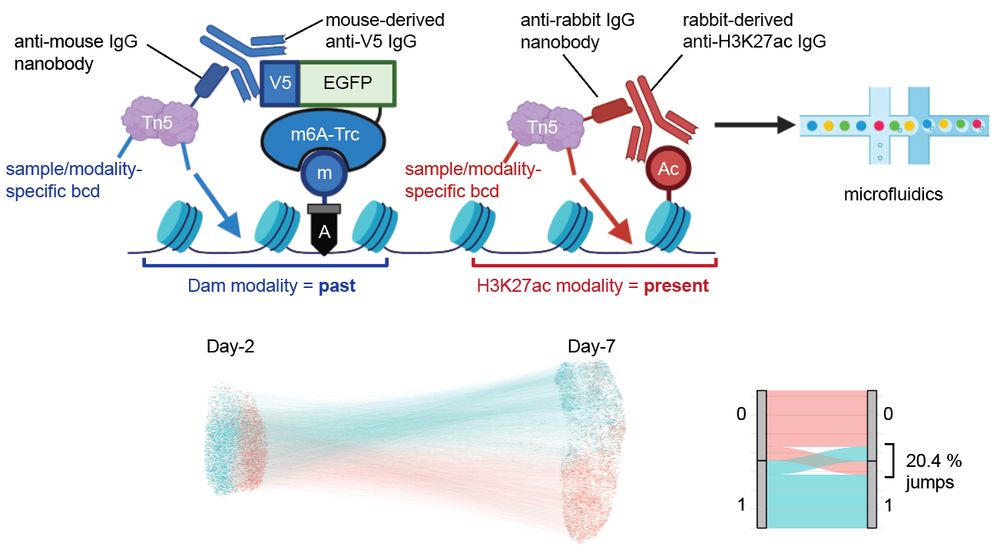
August 16, 2025 at 7:15 AM
Please RP.
We are thrilled to announce that our lab’s first preprint is out!
”Whole-genome single-cell multimodal history tracing to reveal cell identity transition”
We report HisTrac-seq, a multiomic single-cell molecular recording platform.
www.biorxiv.org/content/10.1...
We are thrilled to announce that our lab’s first preprint is out!
”Whole-genome single-cell multimodal history tracing to reveal cell identity transition”
We report HisTrac-seq, a multiomic single-cell molecular recording platform.
www.biorxiv.org/content/10.1...
Reposted by Josh Johansen
Finally it's out! www.nature.com/articles/s41... How flexible are essential innate behaviours and their underlying neural circuits? @felixbaier.bsky.social & I, with Hopi Hoekstra and @farrowlab.bsky.social, addressed this by studying the #evolution of threat avoidance in Peromyscus mice.
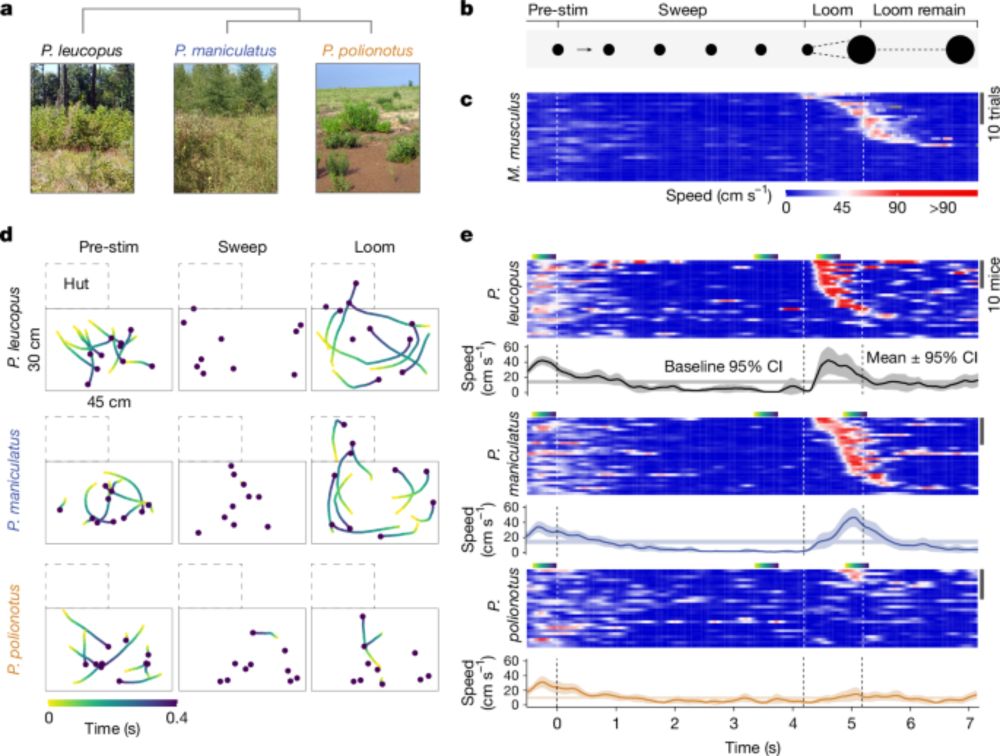
The neural basis of species-specific defensive behaviour in Peromyscus mice - Nature
Visual threat triggers contrasting freeze and escape defensive responses in two species of deer mice as a result of different activation thresholds downstream of the superior colliculus in the do...
www.nature.com
July 23, 2025 at 4:57 PM
Finally it's out! www.nature.com/articles/s41... How flexible are essential innate behaviours and their underlying neural circuits? @felixbaier.bsky.social & I, with Hopi Hoekstra and @farrowlab.bsky.social, addressed this by studying the #evolution of threat avoidance in Peromyscus mice.
Reposted by Josh Johansen
We have an open position for a Scientist I at the Allen Institute for Neural Dynamics. Come join our exciting research environment @alleninstitute.org. Please share!
alleninstitute.org/careers/jobs...
alleninstitute.org/careers/jobs...
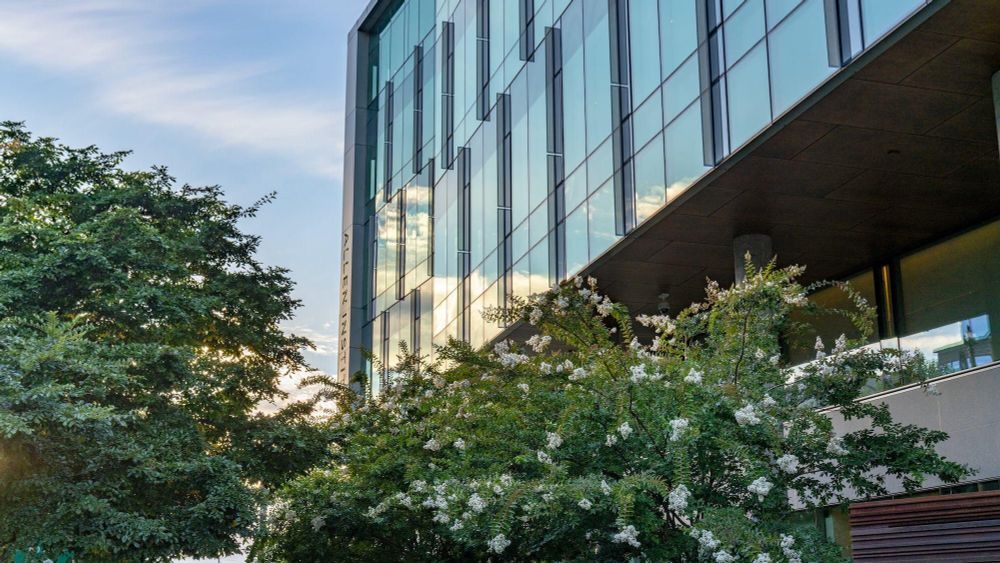
Jobs
We are working to solve the biggest mysteries in bioscience.
alleninstitute.org
July 7, 2025 at 11:39 PM
We have an open position for a Scientist I at the Allen Institute for Neural Dynamics. Come join our exciting research environment @alleninstitute.org. Please share!
alleninstitute.org/careers/jobs...
alleninstitute.org/careers/jobs...
Reposted by Josh Johansen
(more news) New paper just published! Prefrontal representations of social and emotional information generalize across contexts (even though ensembles for socioemotional + contextual information are highly overlapping): www.nature.com/articles/s41...
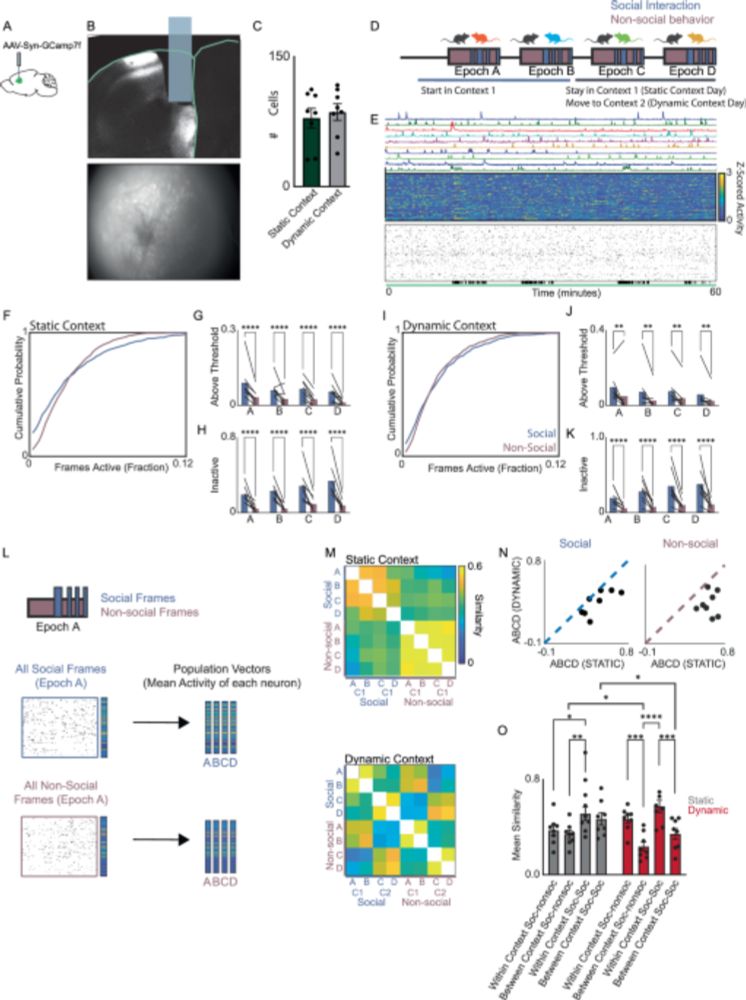
Context-invariant socioemotional encoding by prefrontal ensembles - Nature Communications
How the ensemble encoding of social and anxiety-related behaviors interacts with encoding of context in the prefrontal cortex of mice is not fully understood. Here authors examine how prefrontal neurons encode socioemotional behaviors in different contexts and reveal that the prefrontal cortex encodes context-invariant representations of these behaviors in parallel with representations of context.
https://www.nature.com/articles/s41467-025-59575-8?utm_source=rct_congratemailt&utm_[…]m_campaign=oa_20250701&utm_content=10.1038/s41467-025-59575-8
July 1, 2025 at 10:29 PM
(more news) New paper just published! Prefrontal representations of social and emotional information generalize across contexts (even though ensembles for socioemotional + contextual information are highly overlapping): www.nature.com/articles/s41...
Reposted by Josh Johansen
Noradrenaline and microglia maintain plasticity-rigidity balance to safeguard rapid emotional learning in the prefrontal cortex https://www.biorxiv.org/content/10.1101/2025.06.16.659241v1
June 18, 2025 at 12:15 AM
Noradrenaline and microglia maintain plasticity-rigidity balance to safeguard rapid emotional learning in the prefrontal cortex https://www.biorxiv.org/content/10.1101/2025.06.16.659241v1
Reposted by Josh Johansen
Our work with Pablo Tano, @hyunggoo-kim.bsky.social Athar Malik, Alexandre Pouget and @naoshigeuchida.bsky.social exploring how dopamine neurons could enable multi-timescale reinforcement learning in the brain is out in @nature.com
www.nature.com/articles/s41...
www.nature.com/articles/s41...

Multi-timescale reinforcement learning in the brain - Nature
Individual dopaminergic neurons encode future rewards over distinct temporal horizons.
www.nature.com
June 4, 2025 at 6:11 PM
Our work with Pablo Tano, @hyunggoo-kim.bsky.social Athar Malik, Alexandre Pouget and @naoshigeuchida.bsky.social exploring how dopamine neurons could enable multi-timescale reinforcement learning in the brain is out in @nature.com
www.nature.com/articles/s41...
www.nature.com/articles/s41...
Reposted by Josh Johansen
Congratulations to our Human Neural Circuitry team; bit.ly/4dEyX7Z publishes today in Science! This was the hardest challenge of my career, but one of the most rewarding, after years of rebuilding– & expanding my inpatient neuropsychiatry in the service of basic discovery bsky.app/profile/deis...
May 30, 2025 at 5:32 AM
Congratulations to our Human Neural Circuitry team; bit.ly/4dEyX7Z publishes today in Science! This was the hardest challenge of my career, but one of the most rewarding, after years of rebuilding– & expanding my inpatient neuropsychiatry in the service of basic discovery bsky.app/profile/deis...
Reposted by Josh Johansen
📣 #SfN25 abstract submission is now open!
Share your research with the global neuroscience community.
Start now to avoid the last-minute rush!
🔗 bit.ly/3G5vEde
#NeuroSky #AcademicChatter
Share your research with the global neuroscience community.
Start now to avoid the last-minute rush!
🔗 bit.ly/3G5vEde
#NeuroSky #AcademicChatter
May 21, 2025 at 2:45 PM
📣 #SfN25 abstract submission is now open!
Share your research with the global neuroscience community.
Start now to avoid the last-minute rush!
🔗 bit.ly/3G5vEde
#NeuroSky #AcademicChatter
Share your research with the global neuroscience community.
Start now to avoid the last-minute rush!
🔗 bit.ly/3G5vEde
#NeuroSky #AcademicChatter
Reposted by Josh Johansen
Sharing a new paper from the lab. This paper, led by Sangyoon Ko, represents a merging of two longstanding research themes in the lab-- adult neurogenesis and systems consolidation.
rdcu.be/el18q
A short thread follows for those interested.
1/n
rdcu.be/el18q
A short thread follows for those interested.
1/n
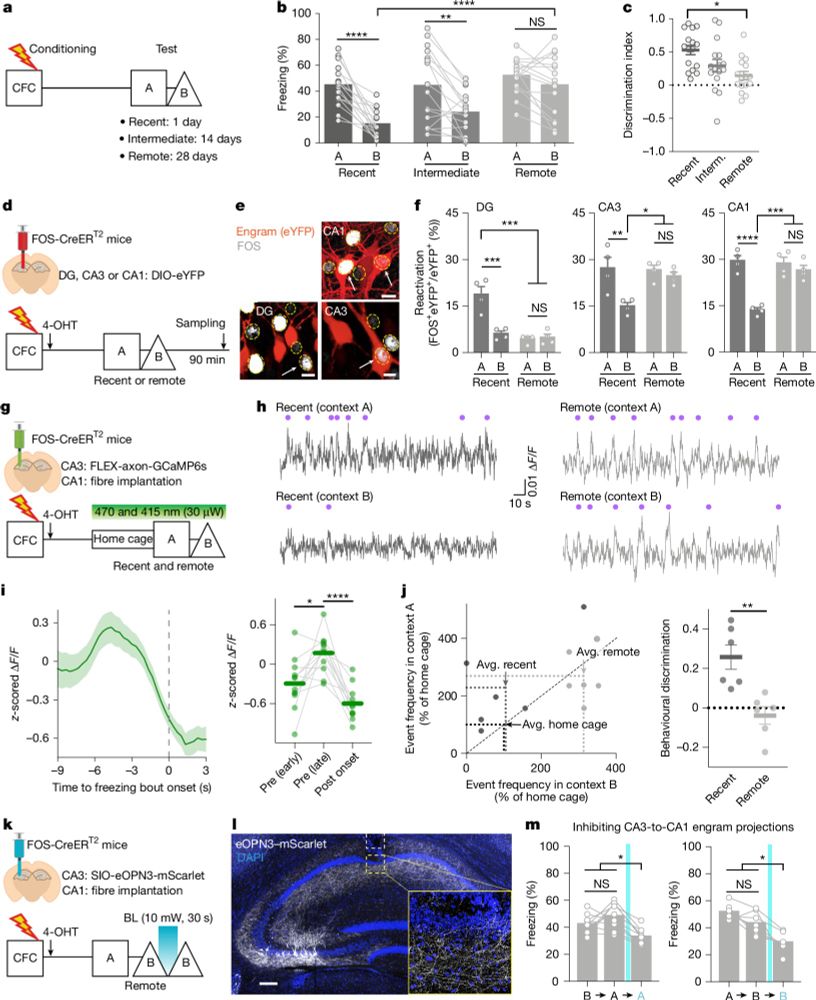
Systems consolidation reorganizes hippocampal engram circuitry
Nature - A study shows that loss of memory precision associated with systems consolidation can be explained by neurogenesis-dependent reorganization of engram circuitry within the hippocampus over...
rdcu.be
May 14, 2025 at 4:32 PM
Sharing a new paper from the lab. This paper, led by Sangyoon Ko, represents a merging of two longstanding research themes in the lab-- adult neurogenesis and systems consolidation.
rdcu.be/el18q
A short thread follows for those interested.
1/n
rdcu.be/el18q
A short thread follows for those interested.
1/n
I’m excited to share a new paper from the lab. The study led by Xiaowei Gu reveals how the mPFC encodes complex emotional memories, using an internal model to infer emotional associations and memories via projections to the amygdala. a🧵(1/8)
rdcu.be/el19t
rdcu.be/el19t

Prefrontal encoding of an internal model for emotional inference
Nature - Neurons in the rodent dorsomedial prefrontal cortex encode a flexible internal model of emotion by linking directly experienced and inferred associations with aversive experiences.
rdcu.be
May 14, 2025 at 11:35 PM
I’m excited to share a new paper from the lab. The study led by Xiaowei Gu reveals how the mPFC encodes complex emotional memories, using an internal model to infer emotional associations and memories via projections to the amygdala. a🧵(1/8)
rdcu.be/el19t
rdcu.be/el19t
Reposted by Josh Johansen
Our paper is out in Nature.
By examining various inputs to the motor cortex during learning, we found that thalamic inputs learn to activate the cortical neurons encoding the movement being learned.
Tour de force by Assaf in collab with Felix and Marcus. Congrats!
www.nature.com/articles/s41...
By examining various inputs to the motor cortex during learning, we found that thalamic inputs learn to activate the cortical neurons encoding the movement being learned.
Tour de force by Assaf in collab with Felix and Marcus. Congrats!
www.nature.com/articles/s41...

Motor learning refines thalamic influence on motor cortex - Nature
Imaging and optogenetics in mice provide insight into the interplay between the primary motor cortex and the motor thalamus during learning, showing that thalamic inputs have a key role in the executi...
www.nature.com
May 8, 2025 at 12:12 AM
Our paper is out in Nature.
By examining various inputs to the motor cortex during learning, we found that thalamic inputs learn to activate the cortical neurons encoding the movement being learned.
Tour de force by Assaf in collab with Felix and Marcus. Congrats!
www.nature.com/articles/s41...
By examining various inputs to the motor cortex during learning, we found that thalamic inputs learn to activate the cortical neurons encoding the movement being learned.
Tour de force by Assaf in collab with Felix and Marcus. Congrats!
www.nature.com/articles/s41...
Reposted by Josh Johansen
Pleased to share the final published version of @glopez.bsky.social's work in @currentbiology.bsky.social! www.sciencedirect.com/science/arti...
"Region-specific nucleus accumbens dopamine signals encode distinct aspects of avoidance learning"
Congrats, Gaby!!!
"Region-specific nucleus accumbens dopamine signals encode distinct aspects of avoidance learning"
Congrats, Gaby!!!

Region-specific nucleus accumbens dopamine signals encode distinct aspects of avoidance learning
Avoidance learning—learning to avoid bad outcomes—is an essential survival behavior. Dopamine signals are widely observed in response to aversive stim…
www.sciencedirect.com
April 22, 2025 at 4:17 PM
Pleased to share the final published version of @glopez.bsky.social's work in @currentbiology.bsky.social! www.sciencedirect.com/science/arti...
"Region-specific nucleus accumbens dopamine signals encode distinct aspects of avoidance learning"
Congrats, Gaby!!!
"Region-specific nucleus accumbens dopamine signals encode distinct aspects of avoidance learning"
Congrats, Gaby!!!
Reposted by Josh Johansen
Our new paper is out in Science.
What is the synaptic plasticity rule in the brain, we asked. It turns out there are multiple, even within individual neurons.
Congrats Jake!
www.science.org/doi/10.1126/...
What is the synaptic plasticity rule in the brain, we asked. It turns out there are multiple, even within individual neurons.
Congrats Jake!
www.science.org/doi/10.1126/...
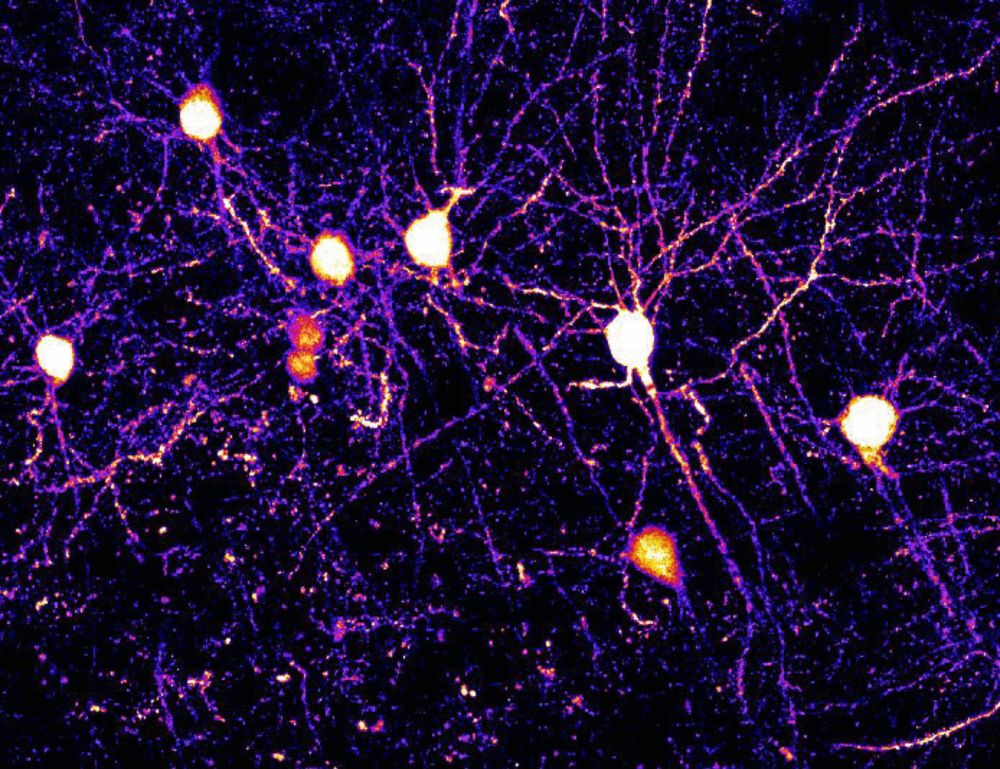
Distinct synaptic plasticity rules operate across dendritic compartments in vivo during learning
Synaptic plasticity underlies learning by modifying specific synaptic inputs to reshape neural activity and behavior. However, the rules governing which synapses will undergo different forms of plasti...
www.science.org
April 17, 2025 at 11:46 PM
Our new paper is out in Science.
What is the synaptic plasticity rule in the brain, we asked. It turns out there are multiple, even within individual neurons.
Congrats Jake!
www.science.org/doi/10.1126/...
What is the synaptic plasticity rule in the brain, we asked. It turns out there are multiple, even within individual neurons.
Congrats Jake!
www.science.org/doi/10.1126/...
Reposted by Josh Johansen
Thanks to all who contributed to the special issue of Cerebral Cortex honoring my career
academic.oup.com/cercor/issue...
academic.oup.com/cercor/issue...

Volume 35 Issue 1 | Cerebral Cortex | Oxford Academic
Publishes papers on the development, organization, plasticity, and function of the cerebral cortex, including the hippocampus.
academic.oup.com
April 15, 2025 at 12:39 AM
Thanks to all who contributed to the special issue of Cerebral Cortex honoring my career
academic.oup.com/cercor/issue...
academic.oup.com/cercor/issue...
Reposted by Josh Johansen
How do we associate the flavors we experience during a meal 🍽️😋 with postingestive effects like food poisoning 🤢🤮 that arise much later?
Our answer in @nature.com this week: Illness signals from the gut reactivate and strengthen flavor representations in the amygdala.
📄: nature.com/articles/s41...
Our answer in @nature.com this week: Illness signals from the gut reactivate and strengthen flavor representations in the amygdala.
📄: nature.com/articles/s41...
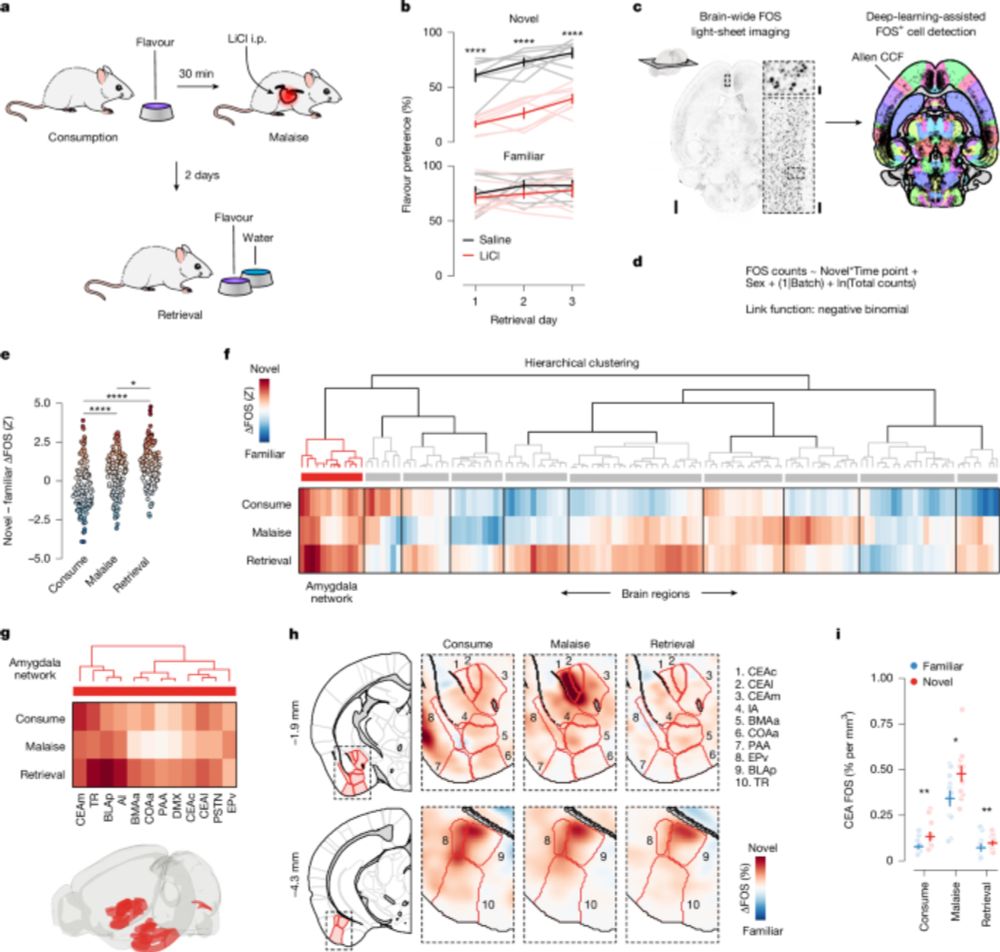
A neural mechanism for learning from delayed postingestive feedback - Nature
Illness signals from the gut reactivate and strengthen flavour representations in the amygdala to support learning from delayed postingestive feedback.
www.nature.com
April 3, 2025 at 6:34 PM
How do we associate the flavors we experience during a meal 🍽️😋 with postingestive effects like food poisoning 🤢🤮 that arise much later?
Our answer in @nature.com this week: Illness signals from the gut reactivate and strengthen flavor representations in the amygdala.
📄: nature.com/articles/s41...
Our answer in @nature.com this week: Illness signals from the gut reactivate and strengthen flavor representations in the amygdala.
📄: nature.com/articles/s41...

